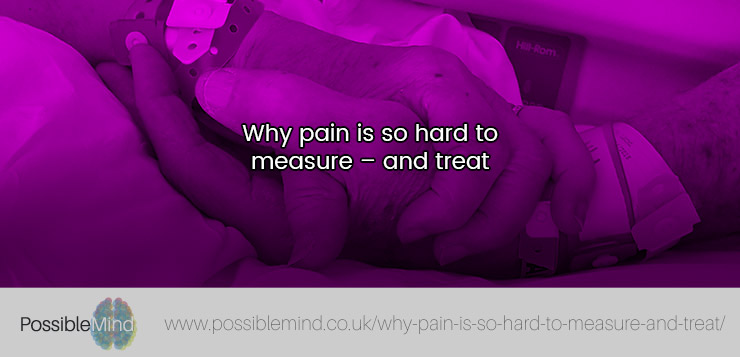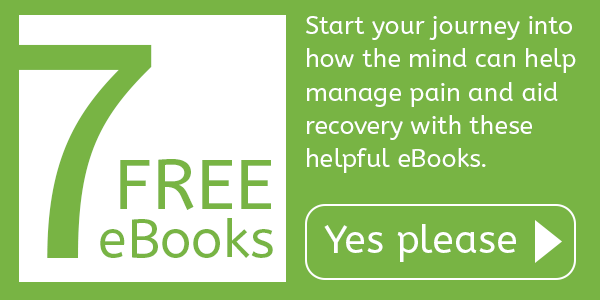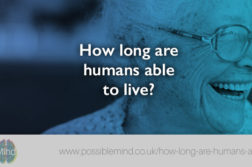It is surprisingly difficult to explain what we feel when we are hurt, so doctors are developing new ways of assessing and treating agony.
One night in May, my wife sat up in bed and said, “I’ve got this awful pain just here.” She prodded her abdomen and made a face. “It feels like something’s really wrong.” Woozily noting that it was 2am, I asked what kind of pain it was. “Like something’s biting into me and won’t stop,” she said.
An hour later, she was sitting up in bed again, in real distress. “It’s worse now,” she said, “really nasty. Can you phone the doctor?” Miraculously, the family doctor answered the phone at 3am, listened to her recital of symptoms and concluded, “It might be your appendix. Have you had yours taken out?” No, she hadn’t. “It could be appendicitis,” he surmised, “but if it was dangerous you’d be in much worse pain than you’re in. Go to the hospital in the morning, but for now, take some paracetamol and try to sleep.”
Barely half an hour later, the balloon went up. She was awakened for the third time, but now with a pain so savage and uncontainable it made her howl like a tortured witch face down on a bonfire. The time for murmured assurances and spousal procrastination was over. I rang a local minicab, struggled into my clothes, bundled her into a dressing gown, and we sped to St Mary’s Paddington at just before 4am.
A registrar poked a needle into my wife’s wrist and said, “Does that hurt? Does that? How about that?” before concluding: “Impressive. You have a very high pain threshold.”
The pain was from pancreatitis, brought on by rogue gallstones that had escaped from her gall bladder and made their way, like fleeing convicts, to a refuge in her pancreas, causing agony. She was given a course of antibiotics and, a month later, had an operation to remove her gall bladder.
“It’s keyhole surgery,” said the surgeon breezily, “so you’ll be back to normal very soon. Some people feel well enough to take the bus home after the operation.” His optimism was misplaced. My lovely wife, she of the admirably high pain threshold, had to stay overnight, and came home the following day filled with painkillers. When they wore off, she writhed with suffering.

During that period of convalescence, as I watched her grimace and clench her teeth and let slip little cries of anguish until a long regimen of combined ibuprofen and codeine finally conquered the pain, several questions came into my head. Chief among them was: Can anyone in the medical profession talk about pain with any authority? From the family doctor to the surgeon, their remarks and suggestions seemed tentative, generalised, unknowing – and potentially dangerous.
I also wondered if there were any agreed words that would help a doctor understand the pain felt by a patient. I thought of my father, a GP in the 1960s with an NHS practice in south London, who used to marvel at the colourful pain symptoms he heard: “It’s like I’ve been attacked with a stapler”; “like having rabbits running up and down my spine”; “it’s like someone’s opened a cocktail umbrella in my penis…” Few of them, he told me, corresponded to the symptoms listed in a medical textbook. So how should he proceed? By guesswork and aspirin?
There seemed to be a chasm of understanding in human discussions of pain
There seemed to be a chasm of understanding in human discussions of pain. I wanted to find out how the medical profession apprehends pain – the language it uses for something that’s invisible to the naked eye, that can’t be measured except by asking for the sufferer’s subjective description, and that can be treated only by the use of opium derivatives that go back to the Middle Ages.
When investigating pain, the basic procedure for clinics everywhere is to give a patient the McGill Pain Questionnaire. This was developed in the 1970s by two scientists, Dr Ronald Melzack and Dr Warren Torgerson, both of McGill University in Montreal, and is still the main tool for measuring pain in clinics worldwide.
Melzack began to list the words patients used to describe their pain and classified them into three categories: sensory (which included heat, pressure, “throbbing” or “pounding” sensations), affective (which related to emotional effects, such as “tiring”, “sickening”, “gruelling” or “frightful”) and lastly evaluative (evocative of an experience – from “annoying” and “troublesome” to “horrible”, “unbearable” and “excruciating”). All the words share an unfortunate quality of sounding like a duchess complaining about a ball that didn’t meet her standards.
But Melzack’s grid of suffering formed the basis of what became the McGill Pain Questionnaire. The patient listens as a list of “pain descriptors” is read out and has to say whether each word describes their pain – and, if so, to rate the intensity of the feeling. The clinicians then put check marks in the appropriate places. This gives the clinician a number, or a percentage figure, to work with in assessing, later, whether a treatment has brought the patient’s pain down or up.
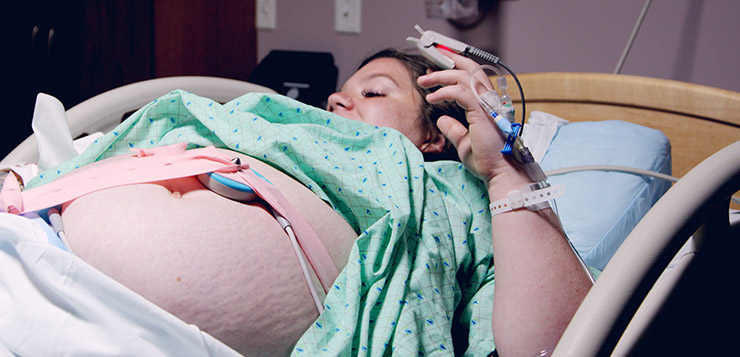
A more recent variant is the National Initiative on Pain Control’s Pain Quality Assessment Scale (PQAS), in which patients are asked to indicate, on a scale of 1 to 10, how “intense” – or “sharp”, “hot”, “dull”, “cold”, “sensitive”, “tender”, “itchy”, etc – their pain has been over the past week.
Women who have experienced childbirth may, after that experience, rate everything else as a mild 3 or 4
The trouble with this approach is the imprecision of that scale of 1 to 10, where a 10 would be “the most intense pain sensation imaginable”. How does a patient imagine the worst pain ever and give their own pain a number? Middle-class British men who have never been in a war zone may find it hard to imagine anything more agonising than toothache or a tennis injury. Women who have experienced childbirth may, after that experience, rate everything else as a mild 3 or 4.
A novelist friend who specialises in World War I drew my attention to Stuart Cloete’s memoir A Victorian Son (1972), in which the author records his time in a field hospital. He marvels at the stoicism of the wounded soldiers: “I have heard boys on their stretchers crying with weakness, but all they ever asked for was water or a cigarette. The exception was a man hit through the palm of the hand. This I believe to be the most painful wound there is, as the sinews of the arm contract, tearing as if on a rack.”
Use of questionnaires to give pain a number doesn’t impress Stephen McMahon of the London Pain Consortium, an organisation formed in 2002 to promote internationally competitive research into pain. “There are lots of problems that come with trying to measure pain,” he says. “I think the obsession with numbers is an oversimplification. Pain is not unidimensional. It doesn’t just come with scale – a lot or a little – it comes with other baggage: how threatening it is, how emotionally disturbing, how it affects your ability to concentrate. The measuring obsession probably comes from the regulators who think that, to understand drugs, you have to show efficacy.”
Pain can be either acute or chronic. Acute pain means a temporary or one-off feeling of discomfort, which is usually treated with drugs while chronic pain persists over time and has to be lived with as a malevolent everyday companion. But because patients build up a resistance to drugs, other forms of treatment must be found for it.
“I’d say that 55 to 60 per cent of our patients suffer from lower back pain,” says Adnan Al-Kaisy, who heads the Pain Management and Neuromodulation Centre at Guy’s and St Thomas’ Hospital in London, Europe’s biggest pain centre. “The reason is, simply, that we don’t pay attention to the demands life makes on us, the way we sit, stand, walk and so on. We sit for hours in front of a computer, with the body putting heavy pressure on small joints in the back.”
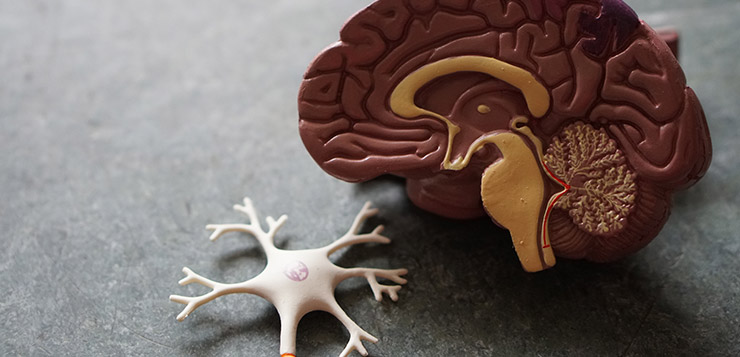
Al-Kaisy reckons that in the UK the incidence of chronic lower back pain has increased substantially in the last 15–20 years, and that “the cost in lost working days is about £6–7 billion”. Elsewhere the clinic treats those suffering from severe chronic headaches and injuries from accidents that affect the nervous system.
Pain can be magnified by a domestic argument or trouble at work – Adnan Al-Kaisy
Do they still use the McGill Questionnaire? “Unfortunately yes,” says Al-Kaisy. “It’s a subjective measurement. But pain can be magnified by a domestic argument or trouble at work, so we try to find out about the patient’s life – their sleeping patterns, their ability to walk and stand, their appetite. It’s not just the patient’s condition, it’s also their environment.”
The challenge is to transform this information into scientific data. “We’re working with Raymond Lee, Chair of Biomechanics at the South Bank University, to see if there can be objective measurement of a patient’s disability due to pain,” he says. “They’re trying to develop a tool, rather like an accelerometer, which will give an accurate impression of how active or disabled they are, and tell us the cause of their pain from the way they sit or stand. We’re really keen to get away from just asking the patient how bad their pain is.”
Some patients arrive with pains that are far worse than backache. Al-Kaisy describes one patient – let us call him Carter – who suffered from a terrible condition called ilioinguinal neuralgia, a disorder that produces a severe burning and stabbing pain in the groin.
“He’d had an operation in the testicular area, and the inguinal nerve had been cut. The pain was excruciating: when he came to us, he was on four or five different medications, opiates with very high dosages, anticonvulsive medication, opioid patches, paracetamol and ibuprofen on top of that. His life was turned upside down, his job was on the line.” The utterly stricken Carter was to become one of Al-Kaisy’s big successes.
Since 2010, Guy’s and St Thomas’ has offered a residential programme for adults whose chronic pain hasn’t responded to treatment at other clinics. The patients come in for four weeks, away from their normal environment, and are seen by a motley crew of psychologists, physiotherapists, occupational health specialists and nursing physicians who between them devise a programme to teach them strategies for managing their pain.
Neuromodulation means distracting the brain from constantly brooding on the pain signals its getting from the body’s periphery
Many of these strategies come under the heading of “neuromodulation”, a term you hear everywhere in pain management circles. In simple terms, it means distracting the brain from constantly brooding on the pain signals it’s getting from the body’s periphery. Sometimes the distraction is a cunningly deployed electric shock.

“We were the first centre in the world to pioneer spinal cord stimulation,” says Al-Kaisy proudly. “We try to send small bolts of electricity to the spinal cord by inserting a wire in the epidural area. It’s only one or two volts, so the patient feels just a tingling sensation over where the pain is, instead of feeling the actual pain. The patient feels nothing except his pain going down. It’s not invasive – we usually send patients home the same day.”
When Carter, the chap with the agonised groin, had failed to respond to any other treatments, Al-Kaisy tried his box of tricks. “We gave him something called a dorsal root ganglion stimulation,” says Al-Kaisy. “It makes the spine hyperexcited, and sends impulses to the spinal cord and the brain. Over ten days the intensity of pain went down by 70 per cent – by the patient’s own assessment.
“He wrote me a very nice email saying I had changed his life, that the pain had just stopped completely, and that he was coming back to normality. He said his job was saved, as was his marriage, and he wanted to go back to playing sport. This is a remarkable outcome. You cannot get it from any other therapies.”
The greatest recent breakthrough in assessing pain, according to Irene Tracey, head of the University of Oxford’s Nuffield Department of Clinical Neurosciences, has been the understanding that chronic pain is a thing in its own right. She explains: “We always thought of it as acute pain that just goes on and on – and if chronic pain is just a continuation of acute pain, let’s fix the thing that caused the acute and the chronic should go away. That has spectacularly failed. Now we think of chronic pain as a shift to another place, with different mechanisms, such as changes in genetic expression, chemical release, neurophysiology and wiring. We’ve got all these completely new ways of thinking about chronic pain. That’s the paradigm shift in the pain field.”
Tracey has been called the “Queen of Pain” by some media commentators. Despite her nickname, in person she is far from alarming: a bright-eyed, enthusiastic, welcoming and hectically fluent woman of 50, she talks about pain at a personal level. She has no problem defining the “ultimate pain” that scores 10 on the McGill Questionnaire: “I’ve been through childbirth three times, and my 10 is a very different 10 from before I had kids. I’ve got a whole new calibration on that scale.” But how does she explain the ultimate pain to people who haven’t experienced childbirth? “I say, ‘Imagine you’ve slammed your hand in a car door – that’s 10.’”
Recently, she says, there has been an explosion of understanding about how the brain is involved in pain. Neuroimaging, she explains, helps to connect the subjective pain with the objective perception of it. “It fills that space between what you can see and what’s being reported. We can plug that gap and explain why the patient is in pain even though you can’t see it on your X-ray or whatever. You’re helping to bring truth and validity to these poor people who are in pain but not believed.”
But you can’t simply “see” pain glowing and throbbing on the screen in front of you. “Brain imaging has taught us about the networks of the brain and how they work,” she says. “It’s not a pain-measuring device. It’s a tool that gives you fantastic insight into the anatomy, the physiology and the neurochemistry of your body and can tell us why you have pain, and where we should go in and try to fix it.”
Some of the ways in, she says, are remarkably direct and mechanical – like Al-Kaisy’s spinal cord stimulation wire. “There are now devices you can attach to your head and allow you to manipulate bits of the brain. You can wear them like bathing caps. They’re portable, ethically allowed brain-simulation devices. They’re easy for patients to use and evidence is coming, in clinical trials, that they are good for strokes and rehabilitation.”
Researchers at the Human Pain Research Laboratory at Stanford University, California, are working to gain a better understanding of individual responses to pain so that treatments can be more targeted. The centre was created in 1995 by the pleasingly named Martin Angst of the Department of Anesthesiology. Its first investigations were into finding reliable methods of quantifying pain. Then Angst – assisted by the equally pleasingly named Martha Tingle – looked into questions of opiate pharmacology, such as how easily the body builds up toleration to drugs.
The laboratory has several study initiatives on the go – into migraine, fibromyalgia, facial pain and other conditions – but its largest is into back pain. It has been endowed with a $10m grant from the National Institutes of Health to study non-drug alternative treatments for lower back pain. The specific treatments are mindfulness, acupuncture, cognitive behavioural therapy and real-time neural feedback. This may seem a very Californian range of pursuits, but the lab takes them very seriously and is enlisting an army of patients to build up a massive database.
A remarkable feature of the assessment process is that patients are also given scores for psychological states: a scale measures their level of depression, anxiety, anger, physical functioning, pain behaviour and how much pain interferes with their lives. This should allow physicians to use the information to target specific treatments.
There are conditions where the sufferer has committed suicide to get away from the pain – Sean Mackey
The head of the Human Pain Research Laboratory is Sean Mackey, Redlich Professor of Anesthesiology, Perioperative and Pain Medicine, Neurosciences and Neurology at Stanford. “There are conditions where the sufferer has committed suicide to get away from the pain,” he says. “Things like post-herpetic neuralgia, that burning nerve pain that occurs after an outbreak of shingles and is horrific. Another is cluster headaches – some patients have thought about taking a drill to their heads to make it stop.”
When asked about his particular successes, he talks about simple solutions. “Early on in my career, I used to be very focused on the peripheral – the apparent site of the pain. I was doing interventions, and some people would get better but a lot wouldn’t. So I started listening to their fears and anxieties and working on those, and became very brain-focused.
“This young woman came to me with a terrible burning sensation in her hand. It was always swollen. She couldn’t stand anyone touching it because it felt like a blowtorch.” Mackey noticed that she had a post-operative scar from prior surgery for carpal-tunnel syndrome. Speculating that this was at the root of her problem, he injected Botox, a muscle relaxant, at the site of the scar.
“A week later, she came up and gave me this huge hug and said, ‘I was able to pick up my child for the first time in two years. I haven’t been able to since she was born.’ All the swelling was gone. It taught me that it’s not all about the body part, and not all about the brain. It’s about both.”
How counterintuitive to discover that, after centuries of curing pain with opiates, the mind can give the morphine a run for its money.
This is an edited version of an article originally published by Mosaic, and is reproduced under a Creative Commons licence.


